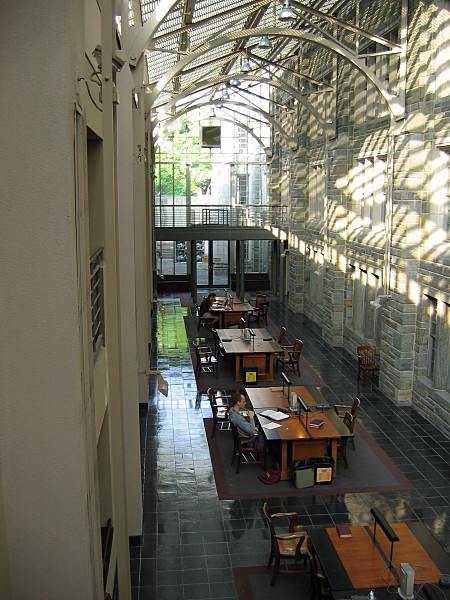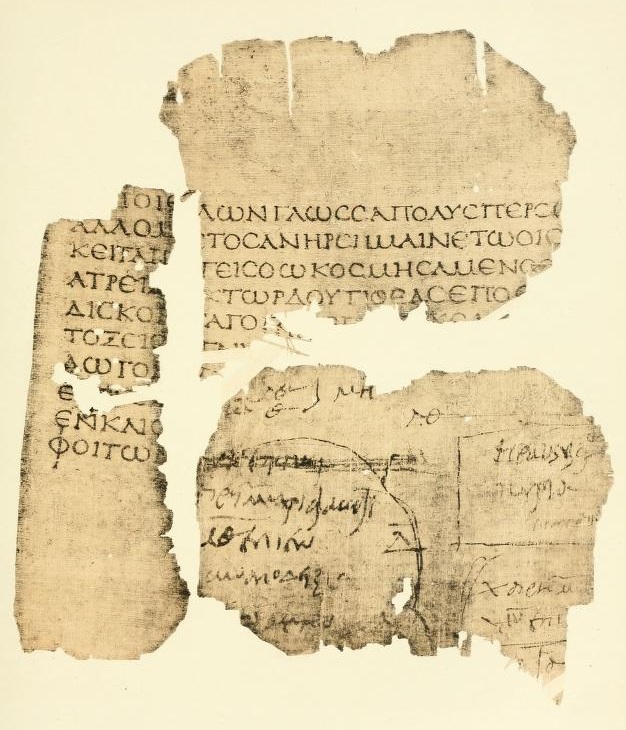|
Papyrus Oxyrhynchus 19
Papyrus Oxyrhynchus 19 (P. Oxy. 19) is a fragment of the first book of the ''Histories'' of Herodotus (chapter 76), written in Greek. It was discovered by Grenfell and Hunt in 1897 in Oxyrhynchus. The fragment is dated to the second or third century. It is housed in Princeton University Library (Curator of Manuscripts). The text was published by Grenfell and Hunt in 1898.P. Oxy. 19 at the Oxyrhynchus Online The manuscript was written on in a roll. The fragment is 125 by 80 mm and contains 16 lines of text. The text is written in small square |
Histories (Herodotus)
The ''Histories'' (, ''Historíai''; also known as ''The History'') of Herodotus is considered the founding work of history in Western literature. Although not a fully impartial record, it remains one of the West's most important sources regarding these affairs. Moreover, it established the genre and study of history in the Western world (despite the existence of historical records and chronicles beforehand). ''The'' ''Histories'' also stands as one of the earliest accounts of the rise of the Achaemenid Empire, Persian Empire, as well as the events and causes of the Greco-Persian Wars between the Persian Empire and the Polis, Greek city-states in the 5th century BC. Herodotus portrays the conflict as one between the forces of slavery (the Persians) on the one hand, and freedom (the Athenians and the confederacy of Greek city-states which united against the invaders) on the other. ''The Histories'' was at some point divided into the nine scroll, books that appear in modern editions ... [...More Info...] [...Related Items...] OR: [Wikipedia] [Google] [Baidu] |
Herodotus
Herodotus (; BC) was a Greek historian and geographer from the Greek city of Halicarnassus (now Bodrum, Turkey), under Persian control in the 5th century BC, and a later citizen of Thurii in modern Calabria, Italy. He wrote the '' Histories'', a detailed account of the Greco-Persian Wars, among other subjects such as the rise of the Achaemenid dynasty of Cyrus. He has been described as " The Father of History", a title conferred on him by the ancient Roman orator Cicero, and the " Father of Lies" by others. The ''Histories'' primarily cover the lives of prominent kings and famous battles such as Marathon, Thermopylae, Artemisium, Salamis, Plataea, and Mycale. His work deviates from the main topics to provide a cultural, ethnographical, geographical, and historiographical background that forms an essential part of the narrative and provides readers with a wellspring of additional information. Herodotus was criticized in his times for his inclusion of "legends an ... [...More Info...] [...Related Items...] OR: [Wikipedia] [Google] [Baidu] |
Greek Language
Greek (, ; , ) is an Indo-European languages, Indo-European language, constituting an independent Hellenic languages, Hellenic branch within the Indo-European language family. It is native to Greece, Cyprus, Italy (in Calabria and Salento), southern Albania, and other regions of the Balkans, Caucasus, the Black Sea coast, Asia Minor, and the Eastern Mediterranean. It has the list of languages by first written accounts, longest documented history of any Indo-European language, spanning at least 3,400 years of written records. Its writing system is the Greek alphabet, which has been used for approximately 2,800 years; previously, Greek was recorded in writing systems such as Linear B and the Cypriot syllabary. The Greek language holds a very important place in the history of the Western world. Beginning with the epics of Homer, ancient Greek literature includes many works of lasting importance in the European canon. Greek is also the language in which many of the foundational texts ... [...More Info...] [...Related Items...] OR: [Wikipedia] [Google] [Baidu] |
Bernard Grenfell
Bernard Pyne Grenfell FBA (16 December 1869 – 18 May 1926) was an English scientist and egyptologist. Excavations he did with Arthur Surridge Hunt uncovered manuscripts including the oldest Oxyrhynchus Papyri. Life Grenfell was the son of John Granville Grenfell FGS and Alice Grenfell. He was born in Birmingham and brought up and educated at Clifton College in Bristol, where his father taught. He obtained a scholarship in 1888 and enrolled at The Queen's College, Oxford.Bell, H. (2004-09-23). Grenfell, Bernard Pyne (1869–1926), papyrologist. Oxford Dictionary of National Biography. Retrieved 18 Jan. 2018, Selink/ref> With his friend and colleague, Arthur Surridge Hunt, he took part in the archaeological dig of Oxyrhynchus and discovered many ancient manuscripts known as the Oxyrhynchus Papyri, including some of the oldest known copies of the New Testament and the Septuagint. Other notable finds are extensive, including previously unknown works by known classical aut ... [...More Info...] [...Related Items...] OR: [Wikipedia] [Google] [Baidu] |
Arthur Surridge Hunt
Arthur Surridge Hunt FBA (1 March 1871 – 18 June 1934) was an English papyrologist. Life Hunt was born in Romford, Essex, England. Over the course of many years, Hunt, along with Bernard Grenfell, recovered many papyri from excavation sites in Egypt, including the Oxyrhynchus Papyri. He worked with Campbell Cowan Edgar on a translation of the Zenon Papyri from the original Greek and Demotic. In 1913, he became Professor of Papyrology at Oxford, succeeding to his lifelong friend and colleague Grenfell, whose professorship lapsed due to the latter’s breakdowns and depression. In January 1918, he married Lucy Ellen, daughter of Surgeon-Major-General Sir A. F. Bradshaw, but during the next few months their only child died. Awards * Appointed Corresponding Fellow of the British Academy. * 1894 – Elected to the Craven Fellowship. Publications *Grenfell, Bernard Pyne and Hunt, Arthur Surridge, ''Sayings of Our Lord from an early Greek Papyrus'' (Egypt Explorati ... [...More Info...] [...Related Items...] OR: [Wikipedia] [Google] [Baidu] |
Oxyrhynchus
Oxyrhynchus ( ; , ; ; ), also known by its modern name Al-Bahnasa (), is a city in Middle Egypt located about 160 km south-southwest of Cairo in Minya Governorate. It is also an important archaeological site. Since the late 19th century, the area around Oxyrhynchus has been excavated almost continually, yielding an enormous collection of papyrus texts dating from the Ptolemaic Kingdom and Egypt (Roman province), Roman Egypt. They also include a few vellum manuscripts, and more recent Arabic language, Arabic manuscripts on paper (for example, the medieval P. Oxy. VI 1006). History Ancient Egyptian era Oxyrhynchus lies west of the main course of the Nile on the Bahr Yussef, a branch that terminates in Lake Moeris and the Faiyum oasis. In ancient Egyptian times, there was a city on the site called Pr (hieroglyph), Per-Medjed, named after the medjed (fish), medjed, a species of Mormyridae, elephantfish of the Nile worshipped there as the fish that ate the penis of Osiris. I ... [...More Info...] [...Related Items...] OR: [Wikipedia] [Google] [Baidu] |
Princeton University Library
Princeton University Library is the main library system of Princeton University. With holdings of more than 7 million books, 6 million microforms, and 48,000 linear feet of manuscripts, it is among the largest libraries in the world by number of volumes. The main headquarters of the university system is the Harvey S. Firestone Memorial Library building, named after tire magnate Harvey Firestone. Additionally, Princeton is part of the Research Collections and Preservation Consortium (ReCAP) along with Columbia Libraries, Harvard Library and New York Public Library. Firestone Library Firestone Library opened in 1948, as the first large American university library constructed after World War II. It was designed by architects Robert B. O'Connor and Walter H. Kilham Jr. Roughly 1.5 million volumes were moved during the summer of 1948 from East Pyne Hall, which until then had served as the University's main library. The library building was expanded in 1971 and again in 1988 and cur ... [...More Info...] [...Related Items...] OR: [Wikipedia] [Google] [Baidu] |
Papyrus
Papyrus ( ) is a material similar to thick paper that was used in ancient times as a writing surface. It was made from the pith of the papyrus plant, ''Cyperus papyrus'', a wetland sedge. ''Papyrus'' (plural: ''papyri'' or ''papyruses'') can also refer to a document written on sheets of such material, joined side by side and rolled up into a scroll, an early form of a book. Papyrus was first known to have been used in Egypt (at least as far back as the First Dynasty of Egypt, First Dynasty), as the papyrus plant was once abundant across the Nile Delta. It was also used History of the Mediterranean, throughout the Mediterranean region. Apart from writing material, ancient Egyptians employed papyrus in the construction of other Artifact (archaeology), artifacts, such as reed boats, mats, rope, sandals, and baskets. History Papyrus was first manufactured in Egypt as far back as the third millennium BCE.H. Idris Bell and T.C. Skeat, 1935"Papyrus and its uses"(British Museum pam ... [...More Info...] [...Related Items...] OR: [Wikipedia] [Google] [Baidu] |
Uncial Script
Uncial is a majuscule script (written entirely in capital letters) commonly used from the 4th to 8th centuries AD by Latin and Greek scribes. Uncial letters were used to write Greek and Latin, as well as Gothic, and are the current style for Coptic and Nobiin. Development Early uncial script most likely developed from late rustic capitals. Early forms are characterized by broad single-stroke letters using simple round forms taking advantage of the new parchment and vellum surfaces, as opposed to the angular, multiple-stroke letters, which are more suited for rougher surfaces, such as papyrus. In the oldest examples of uncial, such as the fragment of '' De bellis macedonicis'' in the British Library, of the late 1st–early 2nd centuries, all of the letters are disconnected from one another, and word separation is typically not used. Word separation, however, is characteristic of later uncial usage. As the script evolved over the centuries, the characters became more com ... [...More Info...] [...Related Items...] OR: [Wikipedia] [Google] [Baidu] |
Oxyrhynchus Papyri
The Oxyrhynchus Papyri are a group of manuscripts discovered during the late nineteenth and early twentieth centuries by papyrology, papyrologists Bernard Pyne Grenfell and Arthur Surridge Hunt at an ancient Landfill, rubbish dump near Oxyrhynchus in Egypt (, modern ''el-Bahnasa''). The manuscripts date from the time of the Ptolemaic Kingdom, Ptolemaic (3rd century BC) and Roman Empire, Roman periods of Egyptian history (from Final War of the Roman Republic, 32 BC to the Muslim conquest of Egypt in 640 AD). Only an estimated 10% are literary in nature. Most of the papyri found seem to consist mainly of public and private documents: codes, edicts, civil registration, registers, official correspondence, census-returns, tax-assessments, petitions, court of record, court-records, sales, leases, last will and testament, wills, bill (law), bills, Account (bookkeeping), accounts, inventories, horoscopes, and private letters. Although most of the papyri were written in Greek language, ... [...More Info...] [...Related Items...] OR: [Wikipedia] [Google] [Baidu] |
Papyrus Oxyrhynchus 18
Papyrus Oxyrhynchus 18 (P. Oxy. 18) is a fragment of the first book of the ''Histories'' of Herodotus (chapters 105-106), written in Greek. It was discovered by Grenfell and Hunt in 1897 in Oxyrhynchus. The fragment is dated to the third century AD. It is housed in the British Library (Department of Manuscripts). The text was published by Grenfell and Hunt in 1898.P. Oxy. 18 at the Oxyrhynchus Online The manuscript was written on in the form of a roll. The measurements of the fragment are 182 by 87 mm. The fragment contains 13 lines of text. The text is written in a good-size ... [...More Info...] [...Related Items...] OR: [Wikipedia] [Google] [Baidu] |
Papyrus Oxyrhynchus 20
Papyrus Oxyrhynchus 20 (P. Oxy. 20) consists of twelve fragments of the second book of the ''Iliad'' (Β, 730–828), written in Greek. It was discovered by Grenfell and Hunt in 1897 in Oxyrhynchus. The fragment is dated to the second century AD. It is housed in the British Library (Department of Manuscripts). The text was published by Grenfell and Hunt in 1898.P. Oxy. 20 at the Oxyrhynchus Online The manuscript was written on in the form of a roll. The measurements of the largest fragment are 145 by 80 mm. The text is written in a large upright calligraphic |







